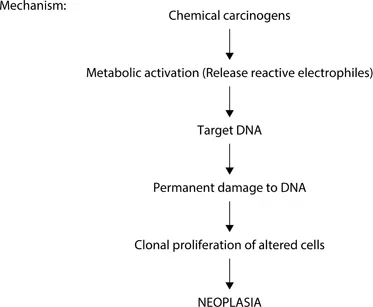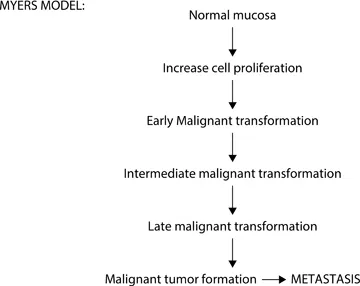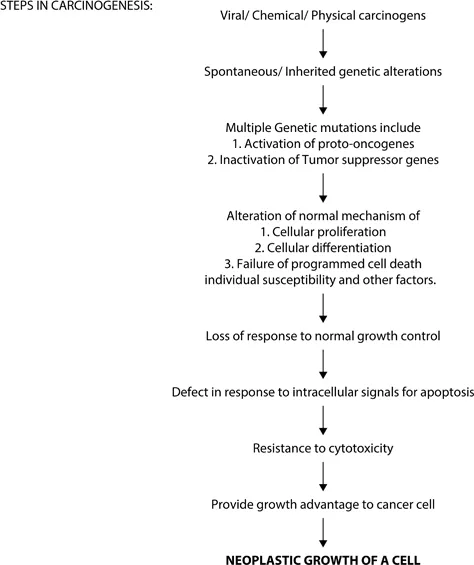
eBook - ePub
Head and Neck Oncology
A Concise Guide
Akheel Mohammad, Ashmi Wadhwania
This is a test
Condividi libro
- 164 pagine
- English
- ePUB (disponibile sull'app)
- Disponibile su iOS e Android
eBook - ePub
Head and Neck Oncology
A Concise Guide
Akheel Mohammad, Ashmi Wadhwania
Dettagli del libro
Anteprima del libro
Indice dei contenuti
Citazioni
Informazioni sul libro
This concise handbook has a unique approach and covers all important aspects of head and neck cancers from basic topics like carcinogenesis to advanced treatment options such as immunotherapy, electrochemotherapy, and robotic surgery in a succinct way. As every treatment center manages its patients with a different modality as per their institutional protocol, this book endeavors to standardize the processes by discussing the management of cancers of all anatomic areas in view of the National Comprehensive Cancer Network (NCCN) guidelines, which is the committee that prepares protocols for management of cancers and every head and which neck oncosurgeons must adhere to for their clinical practice.
Key Features
- Explains the topics through flowcharts and diagrammatic representations that are helpful for exam preparation
-
- This book aims to serve as a valuable resource for postgraduate residents of maxillofacial surgery, ENT and otolaryngology, general surgery, plastic surgery, and junior specialists
-
- Serves as a comprehensive, evidence-based quick reference for the clinician on the go
-
Domande frequenti
Come faccio ad annullare l'abbonamento?
È semplicissimo: basta accedere alla sezione Account nelle Impostazioni e cliccare su "Annulla abbonamento". Dopo la cancellazione, l'abbonamento rimarrà attivo per il periodo rimanente già pagato. Per maggiori informazioni, clicca qui
È possibile scaricare libri? Se sì, come?
Al momento è possibile scaricare tramite l'app tutti i nostri libri ePub mobile-friendly. Anche la maggior parte dei nostri PDF è scaricabile e stiamo lavorando per rendere disponibile quanto prima il download di tutti gli altri file. Per maggiori informazioni, clicca qui
Che differenza c'è tra i piani?
Entrambi i piani ti danno accesso illimitato alla libreria e a tutte le funzionalità di Perlego. Le uniche differenze sono il prezzo e il periodo di abbonamento: con il piano annuale risparmierai circa il 30% rispetto a 12 rate con quello mensile.
Cos'è Perlego?
Perlego è un servizio di abbonamento a testi accademici, che ti permette di accedere a un'intera libreria online a un prezzo inferiore rispetto a quello che pagheresti per acquistare un singolo libro al mese. Con oltre 1 milione di testi suddivisi in più di 1.000 categorie, troverai sicuramente ciò che fa per te! Per maggiori informazioni, clicca qui.
Perlego supporta la sintesi vocale?
Cerca l'icona Sintesi vocale nel prossimo libro che leggerai per verificare se è possibile riprodurre l'audio. Questo strumento permette di leggere il testo a voce alta, evidenziandolo man mano che la lettura procede. Puoi aumentare o diminuire la velocità della sintesi vocale, oppure sospendere la riproduzione. Per maggiori informazioni, clicca qui.
Head and Neck Oncology è disponibile online in formato PDF/ePub?
Sì, puoi accedere a Head and Neck Oncology di Akheel Mohammad, Ashmi Wadhwania in formato PDF e/o ePub, così come ad altri libri molto apprezzati nelle sezioni relative a Médecine e Oto-rhino-laryngologie. Scopri oltre 1 milione di libri disponibili nel nostro catalogo.
Informazioni
1 Carcinogenesis
DOI: 10.1201/9780367822019-1
Carcinogenesis is the process of induction of tumor and the agents that induce these tumors are called carcinogens. Carcinogens are broadly classified into
- Chemical carcinogens
- Physical carcinogens
- Hormonal carcinogens
- Biological carcinogens
Chemical Carcinogens
The first report of any chemical-causing neoplasia came from the observation in 1775 that there was a higher incidence of scrotum cancer in chimney sweepers in London than in the general population (Flowcharts 1.1 and 1.2).

Flowchart 1.1 Initiation of carcinogenesis.

Flowchart 1.2 Mechanism of carcinogenesis.
A single dose of an initiating agent for a large duration is more effective than a short dose with frequent exposure:
- Direct-acting carcinogens: Alkylating agents/acylating agents
- Indirect-acting carcinogens: Polycyclic aromatic hydrocarbons (tobacco)/azodyes
Physical Carcinogenesis
Physical causes are divided into
- Radiation agents: UV light, ionizing radiation
- Non-radiation agents
UV light: The main source of UV radiation is sunlight. It usually penetrates the skin for a few millimeters so that its effect is limited to epidermis. Excessive exposure can cause various forms of skin cancers, such as basal cell carcinoma, keratoacanthoma, and malignant melanoma.
Ionizing radiation: This includes all kinds such as X-rays, radioactive isotopes, protons, and neutrons. The most frequent radiation-induced cancers are leukemia, thyroid cancers, skin cancers, and salivary gland tumors.
Hormonal Carcinogenesis
Cancer is more often seen to develop in organs that undergo proliferation under the influence of excessive stimulation of hormones. Hormone-sensitive tissues that develop tumors are the breast, endometrium, vagina, prostate, and testis.
Biological Carcinogenesis
Biological carcinogenesis has been studied that about 20% of all cancers worldwide are viral-associated cancers. Sanarelli, an Italian physician, in 1889 was the first person who observed the association of oncogenic viruses with the neoplasia.
Examples include DNA oncovirus: Human papillomavirus/Epstein-Barr virus/cytomegalovirus/herpes simplex virus. RNA oncovirus: Human T-cell lymphotropic virus (HTLV).
Theories of Carcinogenesis
Important information:
- Proto-oncogenes: These are normal genes that bring about cellular differentiation and growth. They can be converted into oncogenes.
- Oncogenes: These are genes associated with neoplastic transformation.
- Anti-oncogenes: These are cells that normally suppress cell proliferation. They are also called tumor suppressor genes.
Cancer may arise not only by activation of proto-oncogenes into oncogenes but also by suppressor of anti-oncogenes.
The following sections discuss the theories of carcinogenesis.
Genetic Theory
Genetic theory is the most popular and accepted theory. This theory suggests that the cells become neoplastic due to alterations in the DNA. The mutated cell transmits its character to the next progeny.
Epigenetic Theory
According to epigenetic theory, carcinogenic agents act on the activators or suppressors of genes and not on the gene themselves, which results in the abnormal expression of genes.
Multistep Theory
Carcinogenesis is a multistep process. This is substantiated by in vitro changes in the experimental animals as well as in vivo changes in human cancers.
For example, in chemical carcinogenesis, two essential features occur in proper sequence—initiation and promotion.
Most cancers arise after several mutations, which have been acquired in proper sequential manner.
Immune Surveillance Theory
An immune-competent host often mounts an attack on developing tumor cells to destroy them, while an immune incompetent host fails to destroy them. Some evidence in support of this theory is the fact that there is a high incidence of cancer in AIDS patients and most cancers occur in old people, where the host immune response is weak.
Monoclonal Theory
This theory suggests that cancers arise from a single clone of transformed cells.
Tumor Heterogeneity
This theory by Fidler and Ellis1 states that a tumor is composed of subpopulations heterogeneous of cells. They will differ with respect to their immunogenicity, invasiveness, and sensitivity to cytotoxic drugs. But the environment of local tumor cells may favor the expansion of more aggressive clone information of metastasis (Flowcharts 1.3 and 1.4).

Flowchart 1.3 Myers model.

Flowchart 1.4 Steps in carcinogenesis.
Field Cancerization
Secondary tumors of the oral cavity have a sobering effect on the prognosis for head and neck cancer (HNC) patients. These tumors are most often seen to develop in the oral cavity but can also be seen in lungs or esophagus from which 10–40% of patients with HNC are often fatal. One of the reasons for this multifocal tumor origin was proposed around 40 years ago by Slaughter et al. In accordance with his concept of field cancerization, there are multiple cell groups that independently undergo neoplastic transformation due to stress of regional carcinogenic activity. There are certain molecular genetic approaches that have been recently challenged with the fact that independent transforming events are more common in the epithelial mucosa of HNC patients. Often, when a primary cancer is compared with a secondary tumor somewhere in oral cavity/upper aerodigestive tract, these paired tumors often harbor cells that have identical patterns of genetic alterations or mutations. It is assumed that single cell regimens a critical genetic for advantage of growth over its neighboring cells. At some point of time after the transformation, cells which harbor these early genetic alterations then migrate to nearby adjacent areas to populate contiguous tracts of mucosa further accumulating other alterations that later acquire additional growth advantages from the surrounding environment, and ultimately transform into aggressive subclones that may be separated by space and time.
Secondly, collective observations have supported the view that the epithelial mucosa of the upper aerodigestive tract may become populated by these genetically damaged clones of cells, which may lack any histopathological evidence of dysplastic features. The presence of these genetically damaged but morphologically intact cells not only explains the phenomenon of fi...